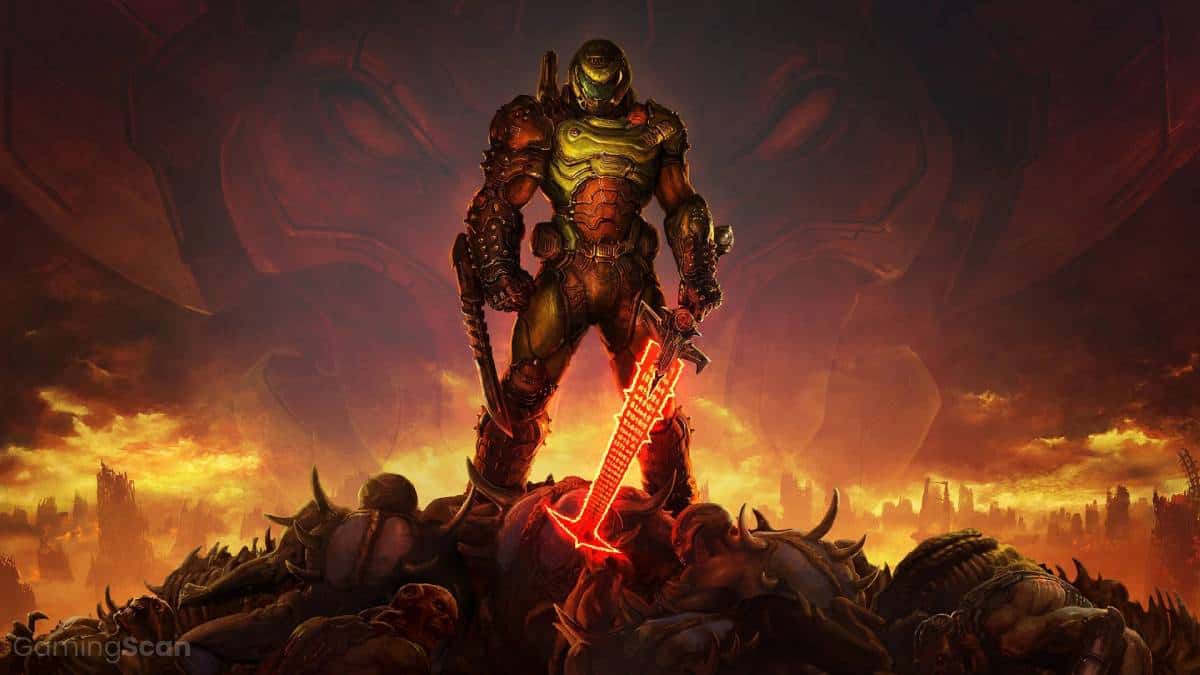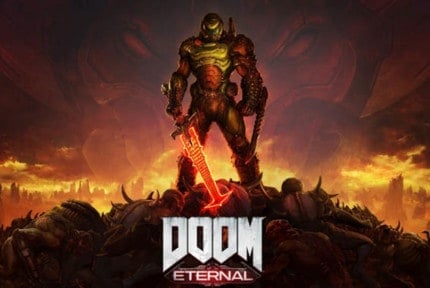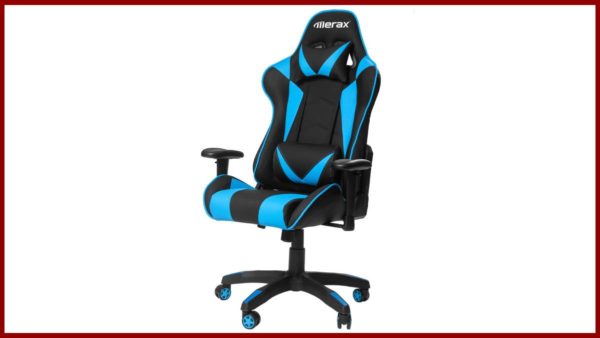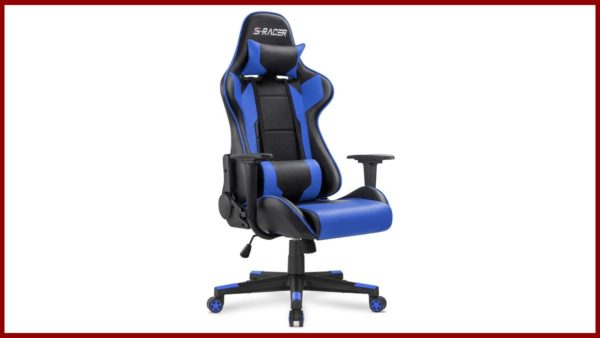Bottom Line
Doom Eternal is a worthy sequel that improves upon the gameplay mechanics of its predecessor while also, sadly, undermining its established lore.
When all is said and done, Doom Eternal is a game primarily worth playing for its excellent combat system that is bound to keep even the most hardened of Doom veterans on edge.
It’s never easy making a sequel for a critically-acclaimed game. Like most long-time Doomers, I completely fell in love with Doom 2016 when it came out, as it was a long-awaited resurrection of a franchise that hadn’t seen a new entry in over a decade at that point.
Doom was known for its fast-paced FPS action, and this is what defined the first two games. However, Doom 3 had a slower, more plot-heavy, horror-oriented approach – something that didn’t sit well with many fans. So, when the 2016 reboot rolled out, it had almost everything that was great about the original game and then some, so it’s understandable why it was so well-received by the fanbase.
Doom 2016 was fast, gory, brutal, and unapologetic in its depiction of gratuitous, over-the-top violence, it prioritized movement and provided just the right amount of depth and complexity without being too complicated or swamping the player with needless exposition.
The 2016 game was the peak of the franchise, and when Doom Eternal was announced, I kept wondering if it would manage to raise that peak even higher. Fast-forward to March 20th of 2020, and the game is finally out, so how does it compare?
Well, I feel that Doom Eternal did some things better but also did other things worse than its predecessor, and in this review, I’ll elaborate on what exactly I mean.
Table of ContentsShow
The Gameplay – Fast, Exhilarating, And a Bit Too Rigid
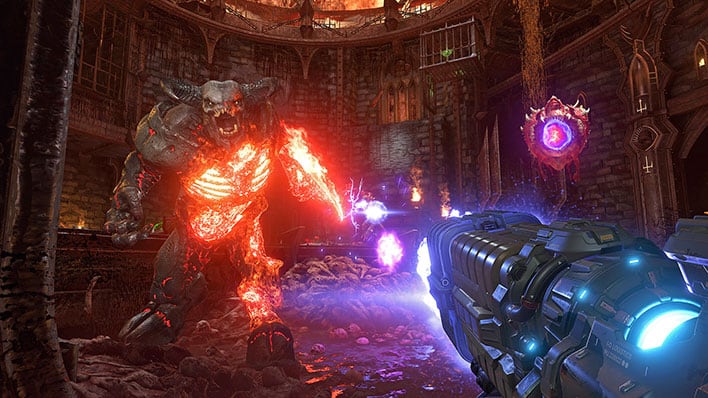
As mentioned in the introduction, Doom 2016 was all about velocity, movement, and carnage. As such, id Software did their best to implement these components in the sequel, all the while expanding the gameplay formula.
In short, Doom Eternal is both faster and more complex than its predecessor, for better or for worse.
When movement is concerned, Doom Eternal features a new dash mechanic and heavy implementation of jump pads in arenas. Add to it the returning double jump, and the player ends up spending a lot more time in the air than in Doom 2016. Frankly, due to the introduction of the dash mechanic, Doom 2016 can now even feel quite sluggish in comparison.
Moreover, secondary weapons and abilities are now a big part of the gameplay formula. I’d say that they’re pretty much indispensable, especially when it comes to those whose purpose is to recover resources and control battles. These are:
- Glory Kills – A feature from the 2016 version that some fans had mixed feelings about. They are as graphic and as satisfying as ever, and they play an important part when it comes to recovering health and efficiently dispatching weakened demons without wasting ammo.
- Blood Punch – Charged by Glory Kills, the Blood Punch is a melee attack that can devastate demons in an area around the player. It is a powerful ability that can deal a lot of damage to heavy enemies and help the player break free of a swarm if they find themselves cornered.
- The Chainsaw – Functioning similarly to the Chainsaw from 2016, it is a much more important part of the arsenal this time around as it is essential for restoring ammo, which is in much shorter supply in Doom Eternal.
- The Flame Belcher – An entirely new addition to the arsenal, the Flame Belcher is a shoulder-mounted flamethrower with unlimited uses and a relatively short cooldown timer. Enemies set on fire by this weapon suffer a damage-over-time effect, and more importantly, they drop armor shards while burning and/or when killed.
- The Grenade Launcher – The grenade launcher comes with two types of grenades: frag and ice. The former is faster and is useful for dispatching groups of enemies while the latter is much better for crowd-controlling faster, tougher demons, and priming them for a killing blow.
- The Crucible – Acquired towards the end of the game, the Crucible is like a melee version of the BFG, as it can instantly kill any However, it holds only three charges and extra charges aren’t exactly in ample supply, so it should be saved only for the toughest of foes.
The main weapon lineup is largely the same, with some tiny changes. Most notably, the pistol is gone, and the Unmaker (now spelled Unmaykr) from Doom 64 makes a return as an unlockable late-game weapon. As for the rest of the arsenal, all the guns from Doom 2016 are back, albeit reskinned and with different attachments this time around.
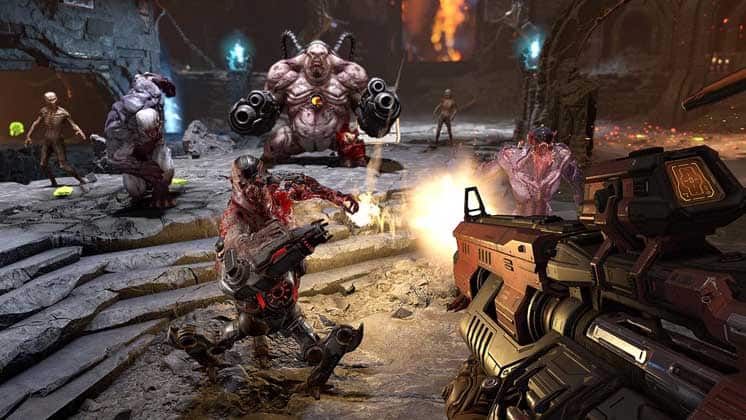
Now, I’ve mentioned that the gameplay formula of Doom Eternal is a bit rigid, and this is mainly due to ammo limitations and the enemies’ resistance to specific weapons.
First, on the subject of ammo – the player’s ammo capacity is extremely low compared to the 2016 Doom. When fully upgraded, you have 24 shotgun shells, which translates to 12 super shotgun blasts before you’ll need to find more or put the chainsaw to a low-ranking demon.
Meanwhile, the Heavy Cannon (Assault Rifle) and the Chaingun can both burn through their shared ammo fairly quickly, especially with some of their alternate firing modes. And to make ammo management matters even worse, the Plasma Rifle and the Ballista (reskinned Gauss Cannon) also share ammo now.
The BFG-9000 is limited to a maximum of 2 shots (down from 3 in Doom 2016), and the Rocket Launcher is limited to a maximum of 13 rockets, albeit it somewhat makes up for this by having higher damage output than the rocket launcher seen in the 2016 game.
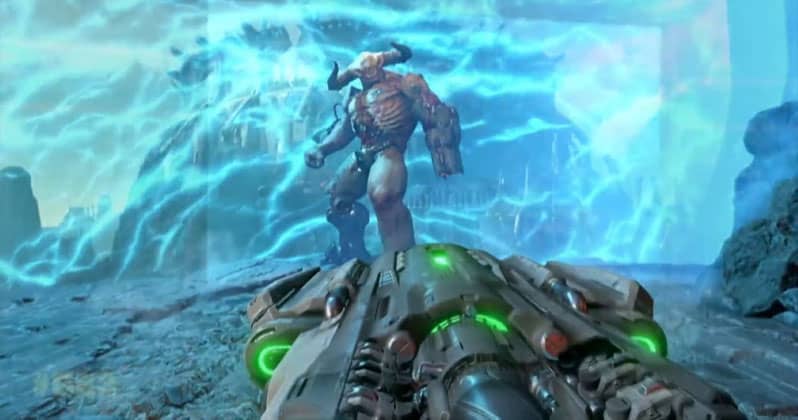
Now, with such a limited ammo supply, the player is basically forced to use the right weapon for the job, especially on higher difficulties, lest they are overwhelmed by demonic hordes which are not only larger than in the prior game, but also involve some new monsters that can cause different levels of annoyance when thrown into the crowded arenas of Doom Eternal.
Granted, Doom 2016 also required you to use the right weapons if you wanted to dispose of enemies quickly and efficiently, but never in my 60+ hours of playing that game (most of it spent on Ultra-Violence and Nightmare difficulty modes) did I feel like it was forcing me to play a certain way. I always had multiple options and never had to worry about running out of ammo if I used light weapons for light enemies and heavy weapons for heavy enemies.
Meanwhile, with Eternal’s heavy focus on the use of the Chainsaw as a means of ammo recovery, you will often find yourself running low and needing to run around the arena looking for fodder demons to chainsaw. Overall, I felt that this really took away from the overall momentum of the combat, especially in mid to late-game when arenas start getting increasingly more crowded by some enemy types that can really get on your nerves.
And speaking of annoying enemy types and taking away from the momentum, let’s take a moment to discuss our friend, the Marauder.
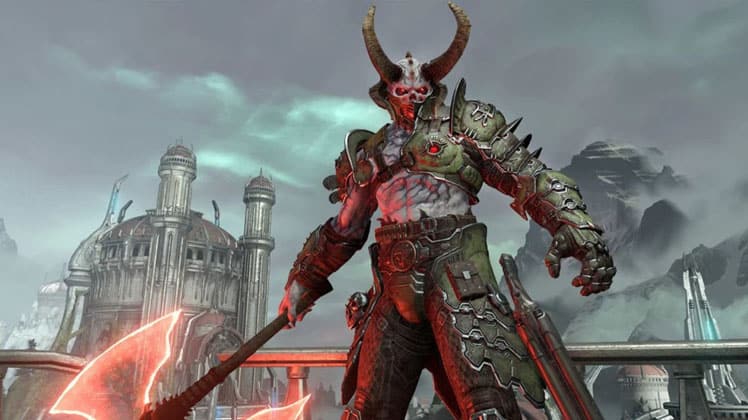
Coming straight out of Dark Souls, this dude is here to make sure you “git gud.” His shield basically makes him invulnerable. He smites you with energy waves at long range, blasts you with a shotgun at close range, and keeps spawning spectral dogs to distract you. Meanwhile, the only way to damage him is to stay at medium range to bait his melee attack and then essentially parry him by shooting him during that brief window as he attacks.
Now, dealing with the Marauder is not really difficult per se. For me, an avid Souls fanboy, figuring out his patterns didn’t take long. The issue here is that fighting him becomes really monotonous quickly, as he is fairly predictable. You have to wait for him to make a specific attack and then counter him multiple times, and you have to do this over and over again for each Marauder that you encounter. It’s not challenging, it’s not fun, it doesn’t even feel satisfying, and he completely kills the game’s momentum when he shows up.
Funny enough, when going from the original 1993 Doom to its sequel, Doom II, I thought that most of the new monsters in Doom II were a complete nuisance to deal with. Now, in 2020, I feel the same way about most of the new enemies that were introduced in Doom Eternal.
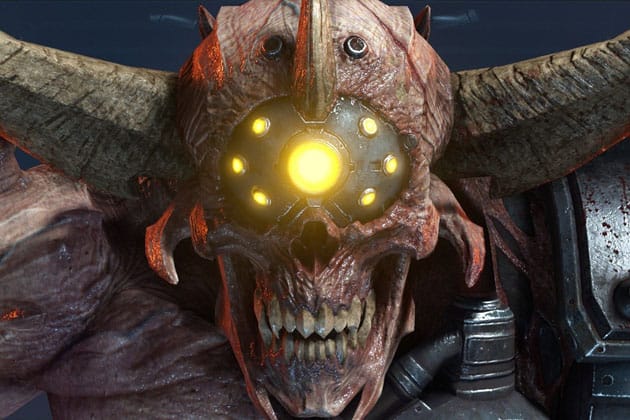
I won’t go on and on about the specifics, but here are a few honorable mentions of enemies I hate almost as much as the Marauder:
- Gargoyles – Imagine if an imp could fly and spit acid instead of throwing fireballs. Now imagine a swarm of them, along with a swarm of imps, in almost every arena, constantly rushing you from behind and showering you with acid.
- Prowler – Now imagine an imp on steroids that can teleport around, has much more health, is constantly rushing at you from behind and throws purple fireballs that are faster and deal more damage than those thrown by regular imps.
- Whiplash – As if three types of fast enemies that can both rush you in melee and attack at range weren’t enough, the devs threw Whiplash in for good measure. This snakelike pest is notoriously difficult to hit due to its slim frame and the way it slithers around the arena. It can whittle down your health bar quickly, all the while having a solid HP pool of its own. Thank God for ice grenades.
- Carcass – A gross Strogg-like monstrosity, it randomly spawns energy barriers in front of you to protect other demons. Yes, it’s as annoying as it sounds, but the barriers are easily overloaded and turned against the enemies with a few shots from the Plasma Rifle.
- Arachnotron – high-damage, high-health mini-Spider Masterminds that are making a return from Doom II, they are an absolute nuisance to deal with in the early game before you get some of the heavier weapons.
- Pain Elemental – An uglier Cacodemon with a ton of health that spawns and throws Lost Souls at you. On the bright side, they were way more annoying in Doom II than they are here.
- Arch-vile – No. Just no. This is what the Crucible is for.
But all in all, I feel that the combat system of Doom Eternal actually works quite well. It is tight and focused and requires the player to learn and adapt, which is both a good and a bad thing.
On the bright side, encounters are much tenser, the enemies deal a lot of damage, but it’s also easier to recover health and armor with the help of glory kills, the Blood Punch, and the Flame Belcher. This encourages the player to be even more aggressive and makes the combat more dynamic.
On the downside, there is not much room for experimentation, you don’t have many options for handling the tougher enemies, and there’s a bit too much micromanagement to think about during big fights, especially in the beginning before you start doing it instinctively.
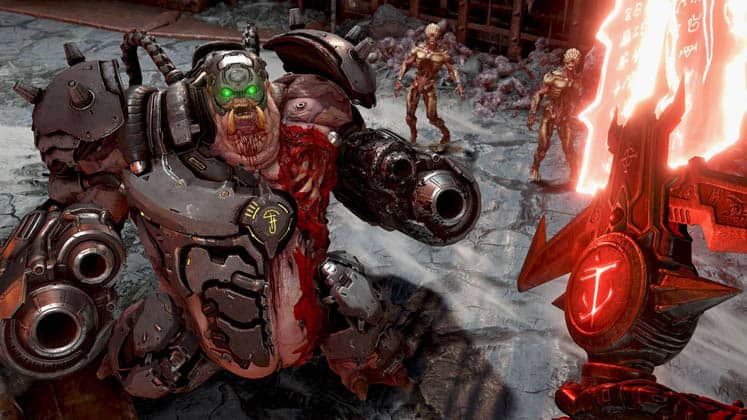
Originally, I started playing on Ultra-Violence, and I had to drop the difficulty to Hurt Me Plenty because the game played so differently from Doom 2016, plus the arsenal was very limited during the first few levels. However, after two days and after acquiring and upgrading most of the in-game weapons, I could dance my way through the Master Level version of the Cultist Base on Ultra-Violence like it was nothing.
I absolutely hated the revised combat system at first, but it grows on you once you figure it out and “get into the zone.” Much like Sekiro: Shadows Die Twice, it requires you to play a specific way, and while the lack of flexibility is definitely a bad thing in my book, the overall formula comes together beautifully to form a unique gameplay experience. I just need to wait for someone to mod out Marauders.
And on a final note, I have to mention that the new environmental puzzles and platforming segments really feel out of place most of the time, and I feel that the game would lose nothing if all of those were just ripped straight out. When playing for the first time, they mostly just feel like padding, and when you play through a level for the second time, they just feel like a chore.
The Story and Presentation – A Major Shift in Tone

Moving on to the story, I was a bit worried when I saw that id Software seemed to be taking a more straightforward approach when it came to the lore and story presentation.
Now, obviously, Doom 2016 wasn’t exactly a plot-heavy game, though it had developed plenty of background lore. However, most of that lore was reserved for optional collectible logs, all the cinematics were in first person, and there was little to no distracting exposition thrown in.
Doom Eternal handles things a bit differently. It has its fair share of cutscenes (about half an hour in total), which is not much, but it can feel like too much because of how superficial most of them are. The story-focused cutscenes mainly just dump some exposition on you and drop a few names, and if you want to actually get any meaningful info about the characters and the plot, then it’s off to the Codex with you.
The overall plot is fairly simple, although I couldn’t help but feel that Doom was having something of an identity crisis and that Eternal didn’t do a very good job at finding a balance between its sci-fi and arcane elements.
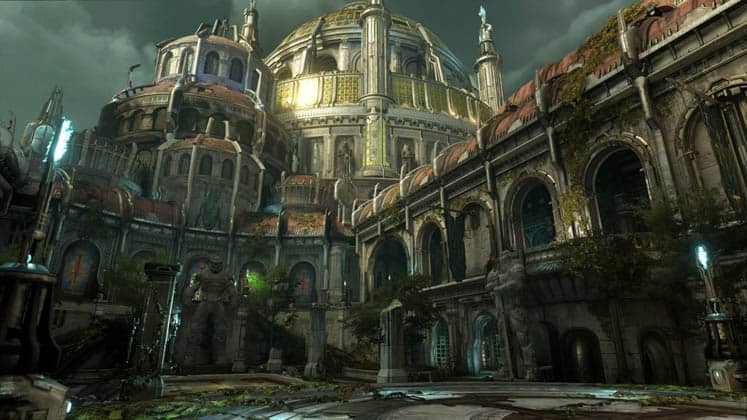
First, I’d like to note that Doom Eternal features a variety of different locales, and this is always a good thing as it prevents the game from getting stale and monotonous. However, there is little sense of consistency, as many of the different levels seen in Doom Eternal feel as if they belong in different IPs, and only a precious few are reminiscent of Doom 2016.
Frankly, most environments feel as if they were taken straight out of Warhammer 40K, and only a few of the levels felt like Doom to me. Now, it’s not that I dislike Warhammer 40K. Still, I do think that this design approach makes Doom Eternal come across as a bit derivative, especially considering that Doom 2016 had a very different style.
Moreover, many of the levels are brightly lit, and even in those that aren’t, the colors are just so vibrant that it all just sort of screams “comic book.” Granted, there is still plenty of gore and some disturbing imagery (especially levels that take place in Hell) but with that colorful front and a couple of condescending villains who just talk and talk, it can get a tad too cartoony for my taste.
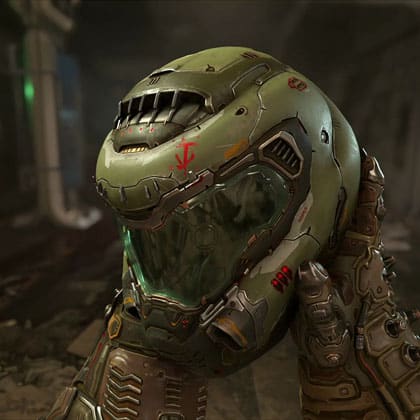
Finally, I can’t help but discuss how I think Doom Eternal completely mishandled vital elements of the story, so if you want to avoid spoilers, best skip straight to the conclusion.
So, something that I feel Doom 2016 excelled at was the way it told its story in a minimalistic manner and presented the Doom Slayer as a mythical demigod figure, rage, and vengeance incarnate, the boogeyman’s boogeyman. The vagueness, the mystery, and his unclear origins were the key to maintaining that “mythical” quality.
And what did Doom Eternal do?
Well, it all but confirmed that the Doom Slayer is the Doomguy from the original Doom games. And did we really need that? After all, Doomguy was hardly ever a character. He was always more of an avatar of the player and explaining his origin completely strips away the mystery that worked so well in Doom 2016.
Suddenly, the superhuman demigod who lived solely for ripping and tearing through demons becomes a guy with PTSD who was used by technologically advanced aliens as a gladiator before having his superhuman powers granted by space techno-magic.
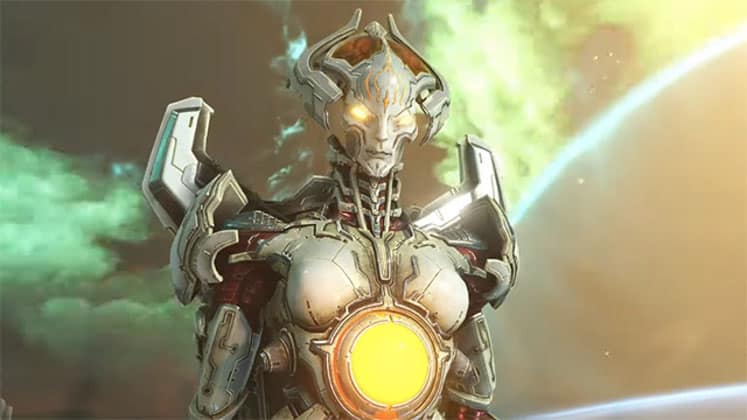
Now, not only does Doom Eternal strip the Doom Slayer of his arcane qualities, but it also does so for the demons and the Eld- cough, I mean, the advanced alien species called the Maykrs who are totally not WH40K’s Eldar.
As it turns out, the seemingly angelic Maykrs have a deal going with the demons, as the Hell energy which is produced by the suffering of the souls trapped within it is crucial for the survival of the Maykrs and their homeworld of Urdak. Yes, the story of Doom Eternal largely revolves around an alien species’ energy crisis.
This, I feel, also undermines the aforementioned arcane qualities of the demons who had a sort of Lovecraftian thing going for them in Doom 2016. They were merciless killing machines with no discernible motivation, all the while being controlled by demonic overlords who seemed to be observing everything but only ever manifested as ethereal voices issuing commands on several occasions.
All in all, I feel like Doom Eternal had a lot of trouble reconciling its sci-fi and fantasy elements. This unique blend is what made the original Doom so unique, and while all the other Doom games have those mystical arcane elements “invading” a sci-fi world, Eternal tries to merge the two into a cohesive whole and only succeeds at having the sci-fi elements overshadow the supernatural ones.
Final Thoughts
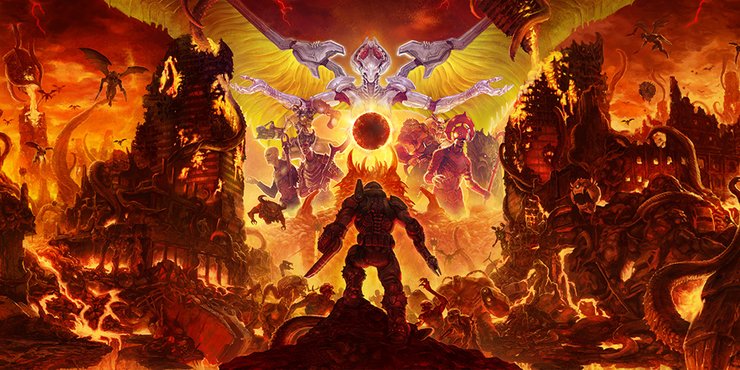
And that would be pretty much everything I have to say about Doom Eternal. As stated in the title, I feel like it is a one step forward-one step back situation compared to its predecessor.
The gameplay is faster, more dynamic, and much more tense, but the formula is also more rigid and a bit too complex. I’ll see how it will age over time, but I am not sure how id Software will tweak it for the next game without making it even more complicated.
As for the story, I personally feel like it has completely missed the mark, as the presentation and the tone are both very different from what we’ve seen in Doom 2016. It might appeal more to a wider audience, but I don’t like the direction that the franchise is heading in this department.
Finally, it’s worth noting that the graphics are great from a technical standpoint (as if that’s much of a surprise) with good and stable performance. Meanwhile, Mick Gordon went all out with the soundtrack this time around, as Eternal features the same kind of blood-pumping tracks that are great for ripping and tearing, as well as some more somber atmospheric ones.
At the end of the day, I feel like Doom Eternal could have been a flat-out 10/10, but with its current story, art direction, as well as the superficial platforming and puzzles, I simply can’t give it such a high score.
